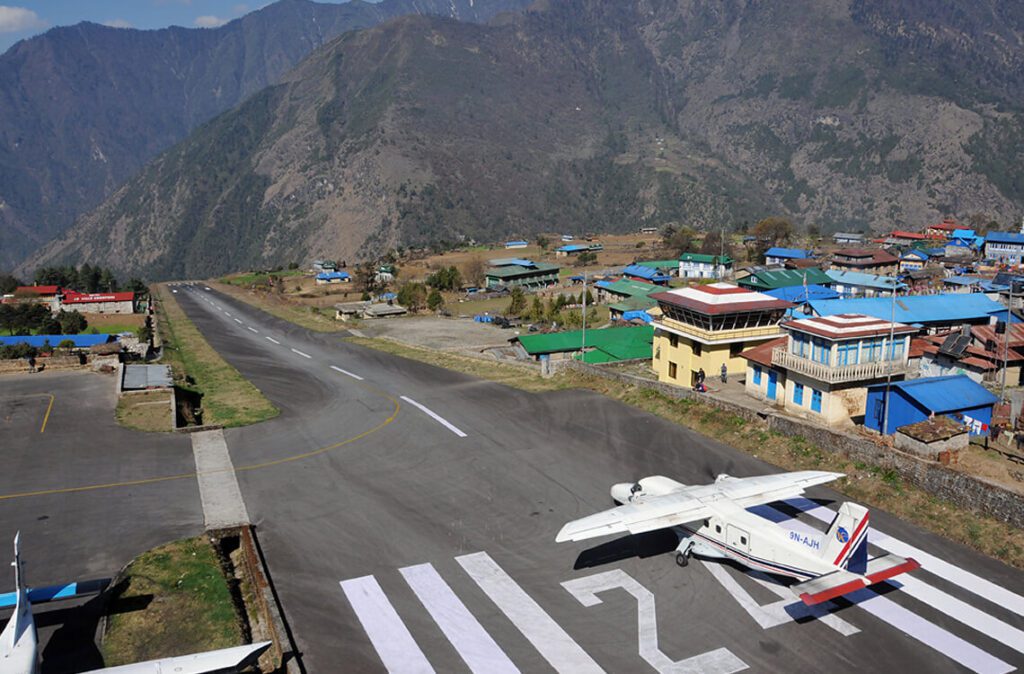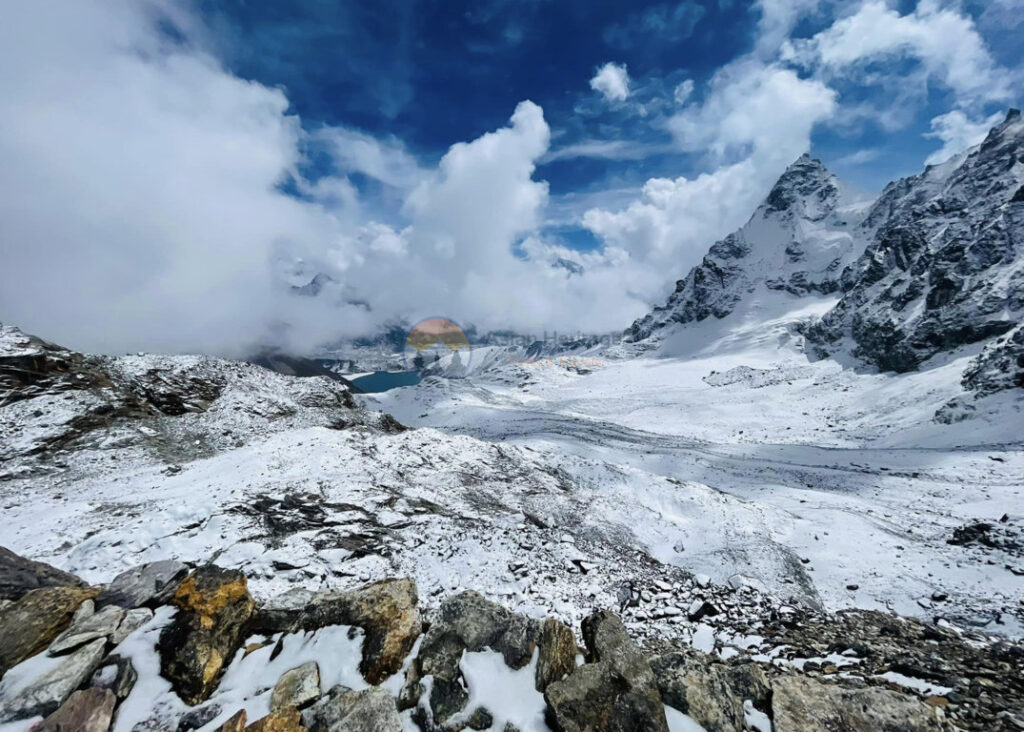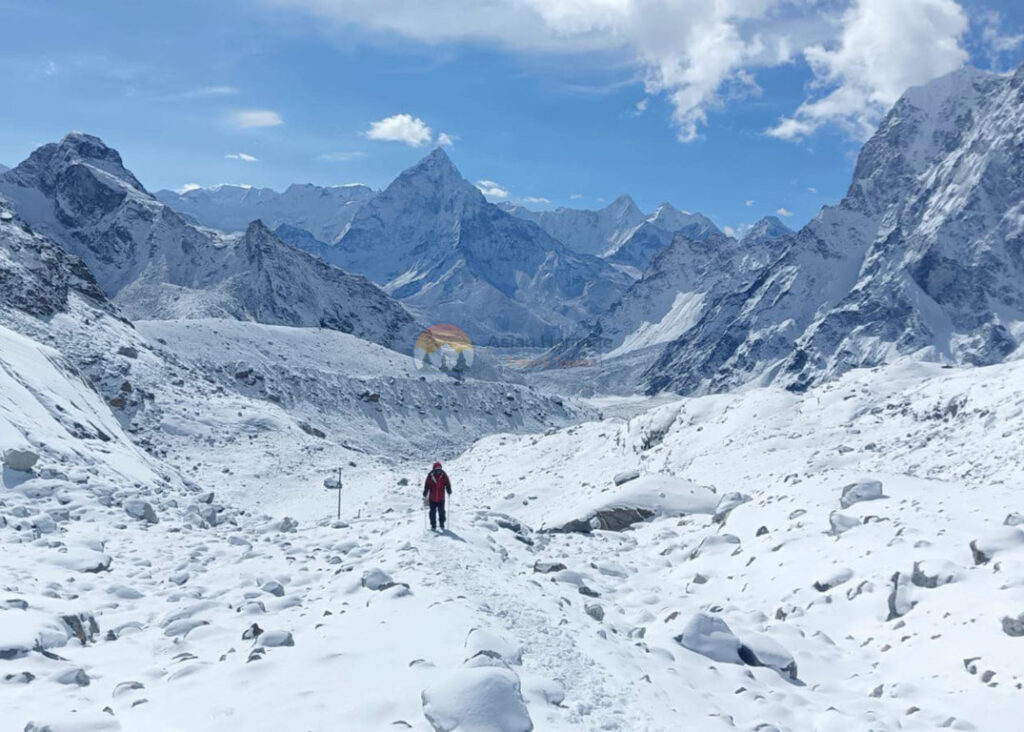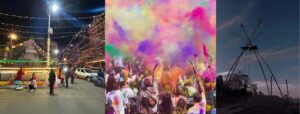Are you up for a challenge? Then the Three Passes Trek Without a Guide in Nepal might be just the adventure you’re looking for. This trek takes you through some of the most breathtaking landscapes in the world, including high mountain passes, glacial lakes, and snow-capped peaks. And the best part? You can do it without a guide.
Of course, going on a guided trek can make things easier and more convenient. But there’s something special about exploring the wilderness on your own terms. You’ll have the freedom to set your own pace, choose your own route, and discover hidden gems that might not be on a guided tour.
Three Passes Trek Without a Guide
The Three Passes Trek is a multi-day trek that takes you through some of the most spectacular landscapes in the world. Starting in the village of Lukla, the trek will take you through several Sherpa villages including Namche Bazaar which is the bustling market town and gateway to the Khumbu region. As you gain altitude, you’ll experience a wide range of landscapes from lush forests to alpine meadows and finally to the barren rocky landscapes of the high-altitude passes.

Three Passes
The first pass on the Three Passes Trek, Renjo La is located at an altitude of 5,360 meters. The pass offers stunning panoramic views of the Gokyo Valley, a glacier-fed valley that is home to several glacial lakes. The turquoise blue waters of these lakes are a breathtaking sight to behold and create a stark contrast against the surrounding snow-capped mountains.

As trekkers make their way up to the pass, they’ll pass by ancient chortens (Buddhist shrines), prayer flags, and rock formations adding to the mystical and spiritual nature of the trek.
The second pass, Cho La sits at an elevation of 5,420 meters and is considered to be the most challenging of the three passes. The pass takes trekkers through the heart of the Khumbu region and offers a close-up view of the towering Ama Dablam peak which is one of the most beautiful and recognizable peaks in the Himalayas.

The trail leading up to the pass is steep and rocky and trekkers will need to navigate several crevasses and icy sections before reaching the top.
The third and final pass on the trek is Kongma La which is situated at an altitude of 5,550 meters. The pass offers sweeping views of the Khumbu Glacier, one of the largest glaciers in the world as well as the iconic Mount Everest, the highest mountain in the world.

From the top of Kongma La, trekkers can see panoramic views of the entire Khumbu region including the neighboring peaks of Lhotse, Nuptse, and Makalu.
Duration of the Three Passes Trek Without a Guide
The duration of completing a three passes trek can vary depending on the specific trek, your fitness level, and the pace at which you choose to trek. Generally speaking, a three passes trek in the Everest region of Nepal takes around 19-21 days to complete.
Also Read: Three Passes Trek Route Facts you may unaware of
The trek covers three high passes the Renjo La Pass, Cho La Pass, and Kongma La Pass as well as several other high-altitude destinations in the region. The trek typically involves walking for 5-8 hours per day and there are a few rest days scheduled into the itinerary to allow for acclimatization to the high altitude.
Itinerary of Three Passes Trek Without a Guide
The Three Passes Trek Without a Guide is one of the most challenging treks in the Everest region of Nepal. This trek takes you through three high mountain passes such as Renjo La Pass, Cho La Pass, and Kongma La Pass, each offering breathtaking views of the Himalayan ranges.
- Day 1: Fly from Kathmandu to Lukla and trek to Phakding
- Day 2: Trek from Phakding to Namche Bazaar
- Day 3: Rest day in Namche Bazaar for acclimatization and exploration
- Day 4: Trek from Namche Bazaar to Thame
- Day 5: Trek from Thame to Lungden
- Day 6: Cross Renjo La Pass and trek to Gokyo
- Day 7: Rest day in Gokyo for acclimatization and exploration
- Day 8: Hike to Gokyo Ri for stunning views of Mt. Everest, Makalu, Cho Oyu, and Lhotse
- Day 11: Trek from Dzongla to Lobuche
- Day 12: Trek from Lobuche to Gorak Shep and hike to Everest Base Camp
- Day 13: Hike to Kala Patthar for sunrise views of Mt. Everest and other peaks, and return to Gorak Shep
- Day 14: Cross Kongma La Pass and trek to Chhukung
- Day 15: Rest day in Chhukung for acclimatization and exploration
- Day 16: Trek from Chhukung to Tengboche
- Day 17: Trek from Tengboche to Namche Bazaar
- Day 18: Trek from Namche Bazaar to Lukla
- Day 19: Fly from Lukla to Kathmandu
This itinerary can be customized depending on your time and fitness level.
Fitness Level Required for Three Passes Trek Without a Guide
When it comes to embarking on a three passes trek having a good level of fitness is essential. This type of trek involves navigating through challenging terrain, high-altitude passes, and long hours of walking each day. Therefore, preparing your body and mind for such an adventure is crucial to ensuring a safe and enjoyable experience.
To begin with, it is important to establish a baseline level of fitness before starting the trek. This can be done by engaging in regular physical activity such as running, hiking, cycling, or swimming. You should aim to exercise at least three to four times a week gradually increasing your intensity and duration over time.
You may also like: Lukla Airport: Runway Length, Crash, History & More
In addition to cardiovascular exercise, it is also important to focus on strength and endurance training. This can be achieved through resistance training such as weightlifting, bodyweight exercises, or yoga. Strengthening your core, legs and back will help you navigate through uneven terrain, steep ascents, and descents.
As you prepare for the trek, it is also crucial to acclimatize to the high altitude. This can be done by spending a few days in a high-altitude location, gradually increasing your altitude each day. This will help your body adapt to the reduced oxygen levels which can be a significant challenge during the trek.
Best Time to Visit
The Three Passes Trek in Nepal is a challenging and rewarding trek that takes you through some of the most stunning scenery in the Himalayas. The best time to visit the Three Passes Trek is during the spring which is March to May and autumn which is September to November in Nepal. During the spring season, the weather is generally mild with clear skies and blooming rhododendron flowers along the trail.
In the spring season, the weather is generally pleasant with clear skies and mild temperatures during the day. The flowers and vegetation along the trail also come to life making for a beautiful and colorful trekking experience. However, occasional showers and colder temperatures at higher elevations are not uncommon during this time.
In the autumn season, the weather is generally dry and stable with clear skies and excellent visibility of the surrounding mountains. The temperatures are also relatively mild, making it an ideal time for trekking. The autumn season is the busiest time of the year for trekking in Nepal and the trails can get crowded especially in the popular areas such as the Everest Base Camp.
Permits for Three Passes Trek
The permits required for the Three Passes Trek include the Sagarmatha National Park Entry Permit and the Khumbu Rural Municipality Permit. These permits can be obtained in Kathmandu or at the entrance of the Sagarmatha National Park in Monjo.
The Sagarmatha National Park Entry Permit is issued by the Nepal Tourism Board and is required to enter the Sagarmatha National Park. The permit fee is NPR 3,000 per person.

The Khumbu Rural Municipality Permit is issued by the Khumbu Pasang Lhamu Rural Municipality and is required to enter the Khumbu region. The permit fee is NPR 2,000 per person. The permit is valid for a single entry.
In addition to these permits, trekkers are also required to obtain a TIMS (Trekkers’ Information Management System) card which is issued by the Nepal Tourism Board. The TIMS card is meant to provide information about trekkers to the authorities in case of an emergency. The TIMS card fee is NPR 2,000 per person for individual trekkers and NPR 1,000 per person for group trekkers.
Three Passes Trek Without a Guide
The Three Passes Trek is possible without a guide, but it requires proper planning, preparation, and experience. The route is well-marked and there are teahouses and lodges along the way, so you don’t necessarily need a guide to navigate the trek. However, crossing the high mountain passes can be challenging and the altitude can pose a risk of altitude sickness, so it is essential to have prior trekking experience, physical fitness, and proper acclimatization.
Tips for Solo Trek
Trekking without a guide can be a rewarding and challenging experience, but it requires proper preparation and planning.
When it comes to embarking on a journey, particularly one that involves hiking or trekking, it is crucial to research and plan your route carefully. A well-planned route ensures that you have a clear understanding of the terrain, distance, and challenges you may encounter along the way. Here are some steps to help you prepare:
Identify your destination:
Before you start researching, you should know where you want to go. Consider factors like distance, difficulty level, and weather conditions to choose a destination that fits your needs and abilities.
Use multiple sources:
Utilize a variety of resources to gather information about your route. Guidebooks, maps, and online resources such as blogs and forums can all provide valuable insights into the terrain, landmarks, and other important details about your route.
Study the terrain:
Understanding the terrain you will encounter is critical for planning. Study the elevation gain, trail conditions, and potential hazards like water crossings or rocky sections. Pay attention to changes in weather and how they might impact your journey.
Popular: Three Passes Trek Permit
Determine your schedule:
Decide how long you want to be on the trail and how many miles you want to cover each day. This will help you plan your itinerary and make sure you have enough time to complete your journey.
Plan for contingencies:
Even the best-laid plans can go awry, so make sure you have backup plans in case of emergencies or unexpected situations. Be prepared with extra food, water, and clothing in case of unexpected weather changes or delays.
Most trekking routes in Nepal require permits, which are issued by the government. The permits are intended to ensure the safety of trekkers and protect the natural environment. The types of permits you’ll need depend on the trekking area you plan to visit. The most common trekking permits in Nepal are the Annapurna Conservation Area Permit (ACAP) and the Sagarmatha National Park Entry Permit (SNP).
These permits are required for treks in the Annapurna and Everest regions, respectively. In addition to these permits, you may also need a TIMS (Trekkers’ Information Management System) card, which is a record of your personal details and trekking itinerary.
To obtain the necessary permits, you can either apply online or through a registered trekking agency. If you’re planning to apply online, you’ll need to provide a copy of your passport, a passport-sized photo, and your trekking itinerary.
The process can take up to several days, so it’s best to apply well in advance of your trek. If you prefer to use a trekking agency, they will take care of obtaining the necessary permits for you. However, be sure to choose a reputable agency that has a good track record of providing quality services.
When embarking on a trek, it’s important to pack wisely and ensure that you have all the necessary gear and equipment to make your journey successful. The gear and equipment you choose can greatly impact your comfort, safety, and overall experience while trekking in Nepal.
Lightweight Items
Since you’ll be carrying your gear and equipment with you throughout the trek, it’s important to choose lightweight items that won’t add unnecessary weight to your load. Look for gear made from lightweight materials, such as synthetic fabrics, and avoid packing unnecessary items that you won’t need.
Trekking in Nepal can be a challenging and rugged experience, so it’s important to pack gear that is durable and can withstand rough terrain and weather conditions. Look for gear made from high-quality materials, such as ripstop nylon, that can withstand wear and tear.
Nepal experiences a lot of rainfall, particularly during the monsoon season, so it’s important to pack waterproof gear to keep your belongings dry. Invest in a good quality waterproof backpack, a waterproof rain cover for your backpack, and waterproof pouches or dry bags for your electronics and other valuable items.
Sleeping Bags and Trekking Poles
A good quality sleeping bag is essential for a comfortable night’s sleep on the trek. Look for a sleeping bag that is lightweight, warm, and compressible, and consider the temperature rating to ensure that it will keep you warm in the colder temperatures of higher altitudes.
Trekking poles can help to reduce the impact on your knees and provide additional stability and support while trekking. Look for poles that are lightweight, collapsible, and adjustable to your height.

Despite the challenges, a solo trek to the Three Passes is a unique and unforgettable adventure. It requires a strong will, a deep appreciation of nature, and the willingness to push oneself beyond one’s limits. The trek provides an opportunity to disconnect from the hustle and bustle of everyday life and to connect with oneself and with nature.
In conclusion, a solo trek to the Three Passes in Nepal is a challenging but immensely rewarding experience. With proper planning, preparation, and a willingness to push oneself beyond one’s limits, trekkers can have an unforgettable adventure in the Himalayas.
Let our expert team at Asian Heritage Treks and Travel take care of everything — from guided tours to personalized packing tips and travel arrangements.
Plan an unforgettable journey







